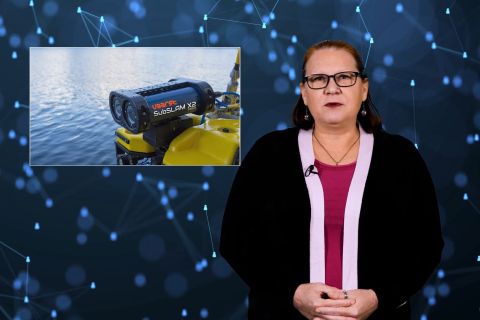
The standard form of lease on the BOEM website for oil and gas development restricts the lessee’s activities to oil and gas production only, Hendrickson writes. (Source: Shutterstock.com)
This is an excerpt from a recent Ralph E. Davis Associates (RED) Weekly E&P Update Newsletter.
Earlier this month, the U.S. Bureau of Ocean Energy Management (BOEM) released the results of OCS Sale 257. One of the interesting observations was the large number of contiguous blocks that were leased in the western Gulf of Mexico. These blocks lie on the western shelf in some cases just beyond the limits of state jurisdiction, in a strip that reaches from Beaumont to Corpus Christi, Texas. Given the proximity to large industrial facilities that emit significant amounts of CO₂ some commentators have speculated this may be a land grab by major players attempting to lock up pore space before the carbon capture, utilization and storage (CCUS) industry takes off.
That may be what’s going on, but if so, it appears to me there are some regulatory hurdles in their way. Here are a couple of observations:
An OCS Oil and Gas Lease Doesn’t Confer Storage Rights—The standard form of lease on the BOEM website for oil and gas development restricts the lessee’s activities to oil and gas production only. Helium production and geothermal recovery are specifically excluded, and the BOEM reserves all other rights. The oil and gas lease does grant the lessee some rights concerning other operations that may impact their operation. Pore space rights can be accessed, but they require a separate lease; perhaps these lessees are merely trying to get a foot in the door.
The Ability of the Department of Interior (DOI) to Lease Pore Space May Be Restricted—According to Chapter 3 of National Petroleum Council’s 2019 CCUS report (“Meeting the Dual Challenge: A Roadmap to At-scale Deployment of Carbon Capture, Use and Storage”), the language in the legislation that grants the DOI the right to lease pore space for CO₂ storage has been interpreted by the BOEM that the “agency would only be able to issue leases for CO₂ storage in the OCS for CO₂ generated as a byproduct of onshore coal-fired power production, but not from CO₂ generated as a byproduct from other industrial activities such as refining, chemical manufacturing, natural gas power generation or non-energy related industries (e.g., steel or cement production).”
It should be noted, however, that the recently passed Infrastructure Investment and Jobs Act directs substantial funds and investments to expand CCUS in the U.S., and this limitation may have been addressed; I haven’t had a chance to research that, however. Even if they haven’t yet been resolved, these seem like minor obstacles and given the current political emphasis on CCUS, ones that are likely to be overcome.
About the Author:
Steve Hendrickson is the president of Ralph E. Davis Associates, an Opportune LLP company. Hendrickson has over 30 years of professional leadership experience in the energy industry with a proven track record of adding value through acquisitions, development and operations. In addition, he possesses extensive knowledge of petroleum economics, energy finance, reserves reporting and data management, and has deep expertise in reservoir engineering, production engineering and technical evaluations. Hendrickson is a licensed professional engineer in the state of Texas and holds an M.S. in Finance from the University of Houston and a B.S. in Chemical Engineering from The University of Texas at Austin. He recently served as a board member of the Society of Petroleum Evaluation Engineers and is a registered FINRA representative.
Recommended Reading
TGS, SLB to Conduct Engagement Phase 5 in GoM
2024-02-05 - TGS and SLB’s seventh program within the joint venture involves the acquisition of 157 Outer Continental Shelf blocks.
2023-2025 Subsea Tieback Round-Up
2024-02-06 - Here's a look at subsea tieback projects across the globe. The first in a two-part series, this report highlights some of the subsea tiebacks scheduled to be online by 2025.
StimStixx, Hunting Titan Partner on Well Perforation, Acidizing
2024-02-07 - The strategic partnership between StimStixx Technologies and Hunting Titan will increase well treatments and reduce costs, the companies said.
Tech Trends: Autonomous Drone Aims to Disrupt Subsea Inspection
2024-01-30 - The partners in the project are working to usher in a new era of inspection efficiencies.
Drilling Tech Rides a Wave
2024-01-30 - Can new designs, automation and aerospace inspiration boost drilling results?





